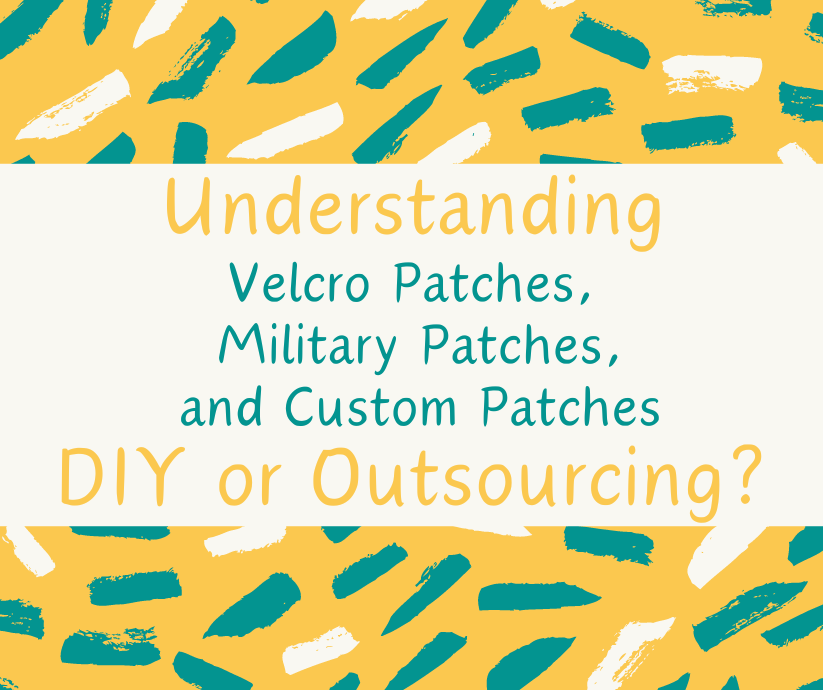Understanding Velcro Patches, Military Patches, and Custom Patches

Velcro Patches, Military Patches, and Custom Patches,these terms, while related to patches, each has distinct characteristics and uses.
Velcro Patches
☞ Features: Backed with a soft, fuzzy material on one side and a stiff hook on the other, Velcro patches adhere to fabrics like clothing and bags using a hook-and-loop system. They can be easily attached and removed.☞ Uses: Commonly found on military uniforms, sportswear, backpacks, and hats, they offer quick and convenient attachment.
Military Patches
☞ Features: Typically designed with strict guidelines, often featuring unit insignia, rank, name, and other identifying information. The materials used are usually durable.☞ Uses: Primarily used on military uniforms for identification purposes, such as indicating the wearer's rank, unit, or branch of service.
Custom Patches
☞ Features: Highly customizable, allowing for unique designs, text, sizes, and shapes. A wide range of materials and production techniques are available.☞ Uses: The applications are vast and varied, including:
→ Group uniforms: For schools, clubs, companies, and organizations.
→ Sportswear: For sports teams and individual athletes.
→ Collectibles: For movies, games, anime, and other interests.
→ Gifts: As unique presents for friends and family.
The Relationship Between the Three
Custom patches encompass both Velcro patches and Military patches.Military patches can be considered a specific type of custom patch but with more rigid regulations and specific uses.
Velcro patches are a common production method for custom patches but can also be attached using other methods like sewing.
In essence, a Velcro patch is a type of patch with a hook-and-loop fastener, a Military patch is a patch designed specifically for military use, and Custom patches is an overarching term for any patch that is designed to meet specific requirements.
How Patches Are Made
While the process of making a patch may seem simple, it involves a series of intricate steps, from design to finished product. Here's a basic overview:Design:
☞ Conceptualization: Your idea is transformed into a specific design or text.☞ Digital Artwork: The design is created as a vector graphic for precise production.
Material Selection:
Fabric:
Common fabrics include cotton, nylon, and PVC, each offering different textures and durability.☞ Thread: The color and material of the thread affect the overall appearance of the patch.
☞ Backing: The backing supports the embroidery and can be made of materials like non-woven fabric or felt.
Digitalization:
☞ Conversion: The design is converted into a format that embroidery or laser-cutting machines can understand.☞ Programming: Depending on the design complexity, an embroidery or cutting program is created.
Production:
☞ Embroidery: The fabric is secured to an embroidery machine and stitched according to the programmed design.☞ Cutting: For PVC or other materials, a laser cutter is used to cut the desired shape.
☞ Heat Pressing: The embroidered or cut patch is heat pressed to secure the threads or layers.
Finishing:
☞ Trimming: Excess threads or edges are trimmed.☞ Packaging: The finished patches are packaged for shipping or storage.
Additional Processes (Optional):
☞ Reinforcement: For added durability, patches can be bound or interlined.☞ Adhesive: An adhesive can be applied to the back for easy attachment.
☞ Velcro: Velcro can be sewn onto the patch for reusable attachment.
Different Patch Materials and Production Methods:
☞ Embroidered Patches: Created by stitching threads onto a fabric backing.☞ PVC Patches: Cut from PVC material using a laser cutter and often heat pressed.
☞ Woven Patches: Made by weaving threads to create the design.
DIY or Outsourcing?
☞ DIY: Requires embroidery machines, cutting machines, and design skills.☞ Outsourcing: Submit your design to a patch manufacturer for production.
Factors to Consider When Customizing Patches:
☞ Quantity: Larger quantities often result in lower unit costs.☞ Materials: Choose fabrics and threads that suit your needs.
☞ Size: Determine the appropriate size for your patch.
☞ Process: Understand the different production methods and choose the best one for your design.
☞ Budget: Set a budget to help you select a manufacturer.
Tips for Designing Patches:
☞ Detailed Designs: More intricate designs require higher skill and may cost more.☞ Color: The choice of thread colors significantly impacts the overall look.
☞ Size: Very small patches may lack detail, while very large patches can be prone to distortion.
